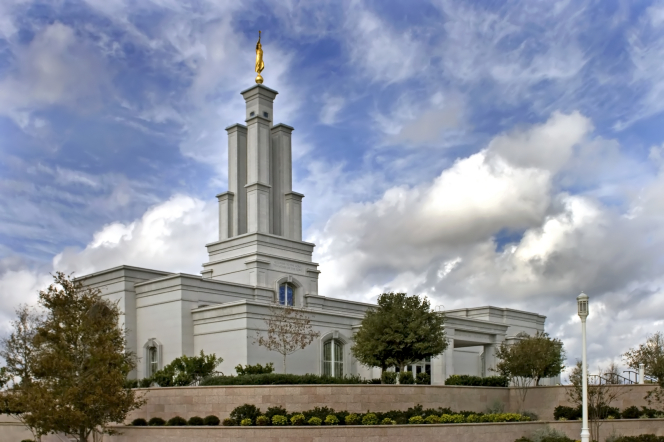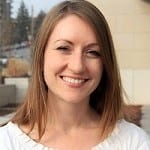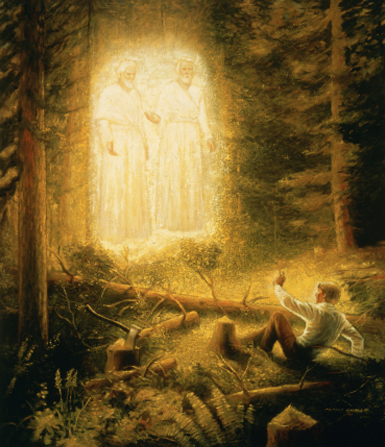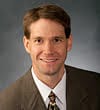Members of the Church and interested outsiders have noted that the First Presidency of the Church of Jesus Christ recently announced a change of its policy regarding same-sex behavior and the blessing or baptism by custodial parents in same-sex relationships.[1]
Such changes in policy are not unexpected. As President Boyd K. Packer taught:
Procedures, programs, the administrative policies, even some patterns of organization are subject to change. The First Presidency are quite free, indeed quite obliged, to alter them from time to time. But the principles, the doctrines, never change. If we overemphasize programs and procedures that can change, and will change, and must change, and do not understand the fundamental principles of the gospel, which never change, we can be misled.[2]
Many sincere members of the Church struggled with the previous policy. For them and many others, we should understand this change as removing a heavy burden, for which we can rejoice.[3]
Some are asking about the First Presidency “flip-flopping.” Tied with this concern is the fact that President Russell M. Nelson (then President of the Quorum of the Twelve) said of the earlier policy: [Read more…] about A Look at the Church’s Change of Policy on Same-Sex Couples and their Children


 FairMormon has a service where questions can be submitted and they are answered by volunteers. If you have a question, you can submit it at
FairMormon has a service where questions can be submitted and they are answered by volunteers. If you have a question, you can submit it at  Brittany A. Chapman Nash is a historian at the Church History Library of The Church of Jesus Christ of Latter-day Saints. She received a BA in Humanities from Brigham Young University and an MA in Victorian Studies from the University of Leicester. She specializes in nineteenth-century Mormon women’s history and is co-editor with Richard E. Turley Jr. of the seven-volume Women of Faith in the Latter Days series, which features the life writings of Latter-day Saint women. She serves on the executive committee of the Mormon Women’s History Initiative Team (MWHIT). She and her husband, Peter Nash, live in Salt Lake City.
Brittany A. Chapman Nash is a historian at the Church History Library of The Church of Jesus Christ of Latter-day Saints. She received a BA in Humanities from Brigham Young University and an MA in Victorian Studies from the University of Leicester. She specializes in nineteenth-century Mormon women’s history and is co-editor with Richard E. Turley Jr. of the seven-volume Women of Faith in the Latter Days series, which features the life writings of Latter-day Saint women. She serves on the executive committee of the Mormon Women’s History Initiative Team (MWHIT). She and her husband, Peter Nash, live in Salt Lake City. FairMormon has a service where questions can be submitted and they are answered by volunteers. If you have a question, you can submit it at
FairMormon has a service where questions can be submitted and they are answered by volunteers. If you have a question, you can submit it at 
 Tyler J. Griffin was born and raised in Providence, Utah in the beautiful Cache Valley. After serving a mission in Brazil Curitiba, he returned home and completed a Bachelor’s degree in Electrical/Computer Engineering. He married Kiplin Crook and began teaching seminary in Brigham City, Utah. After six years in that assignment, he transferred to the Institute adjacent to Utah State University where he worked for the next seven years. One of his assignments there was working in the Seminary Preservice program (teaching and training potential seminary teachers) for four years. He also developed an online home study seminary program. His masters and doctorate degrees are both in Instructional Technology. He and his wife have 10 children (5 boys and 5 girls). He has been at BYU since August 2010.
Tyler J. Griffin was born and raised in Providence, Utah in the beautiful Cache Valley. After serving a mission in Brazil Curitiba, he returned home and completed a Bachelor’s degree in Electrical/Computer Engineering. He married Kiplin Crook and began teaching seminary in Brigham City, Utah. After six years in that assignment, he transferred to the Institute adjacent to Utah State University where he worked for the next seven years. One of his assignments there was working in the Seminary Preservice program (teaching and training potential seminary teachers) for four years. He also developed an online home study seminary program. His masters and doctorate degrees are both in Instructional Technology. He and his wife have 10 children (5 boys and 5 girls). He has been at BYU since August 2010. Scott Gordon is president of FairMormon and as such has been a writer of several articles and a speaker at firesides. He has a master’s degree in Business Administration from Brigham Young University with a bachelor’s in Organizational Communication. He has held many Church callings, including Bishop, and currently serves as the Ward Mission Leader. He is married to Sheri Farnsworth Gordon and has five children.
Scott Gordon is president of FairMormon and as such has been a writer of several articles and a speaker at firesides. He has a master’s degree in Business Administration from Brigham Young University with a bachelor’s in Organizational Communication. He has held many Church callings, including Bishop, and currently serves as the Ward Mission Leader. He is married to Sheri Farnsworth Gordon and has five children.